The Nvidia GeForce RTX 3060 Ti proves that not all graphics cards need to redefine what a GPU is capable of. Most users will find the Nvidia GeForce RTX 3080 and the more expensive RTX 3090 to pack more power than they really need and at a price that just doesn’t make sense for their needs. The RTX 3060 Ti, however, makes Nvidia Ampere technology more accessible to budget-minded consumers.
Just like its predecessor, the RTX 3060, the 3060 Ti does a fantastic job balancing performance with affordability. ALthough it is Ampere’s newest budget option, its performance rivals, and sometimes eclipses, that of the RTX 2080 Super, one of the top graphics cards of the previous generation. That means that gamers can experience their favorite games at higher graphical settings with ray tracing turned on and at 1440p without breaking the bank.
Though finding an RTX 3060 Ti in stock may be tough right now thanks to the shortages that graphics cards have seen this past year, it’s not impossible. And, if you’re able to get your hands on one, it’s a more affordable route to excellent 1080p and 1440p gaming.
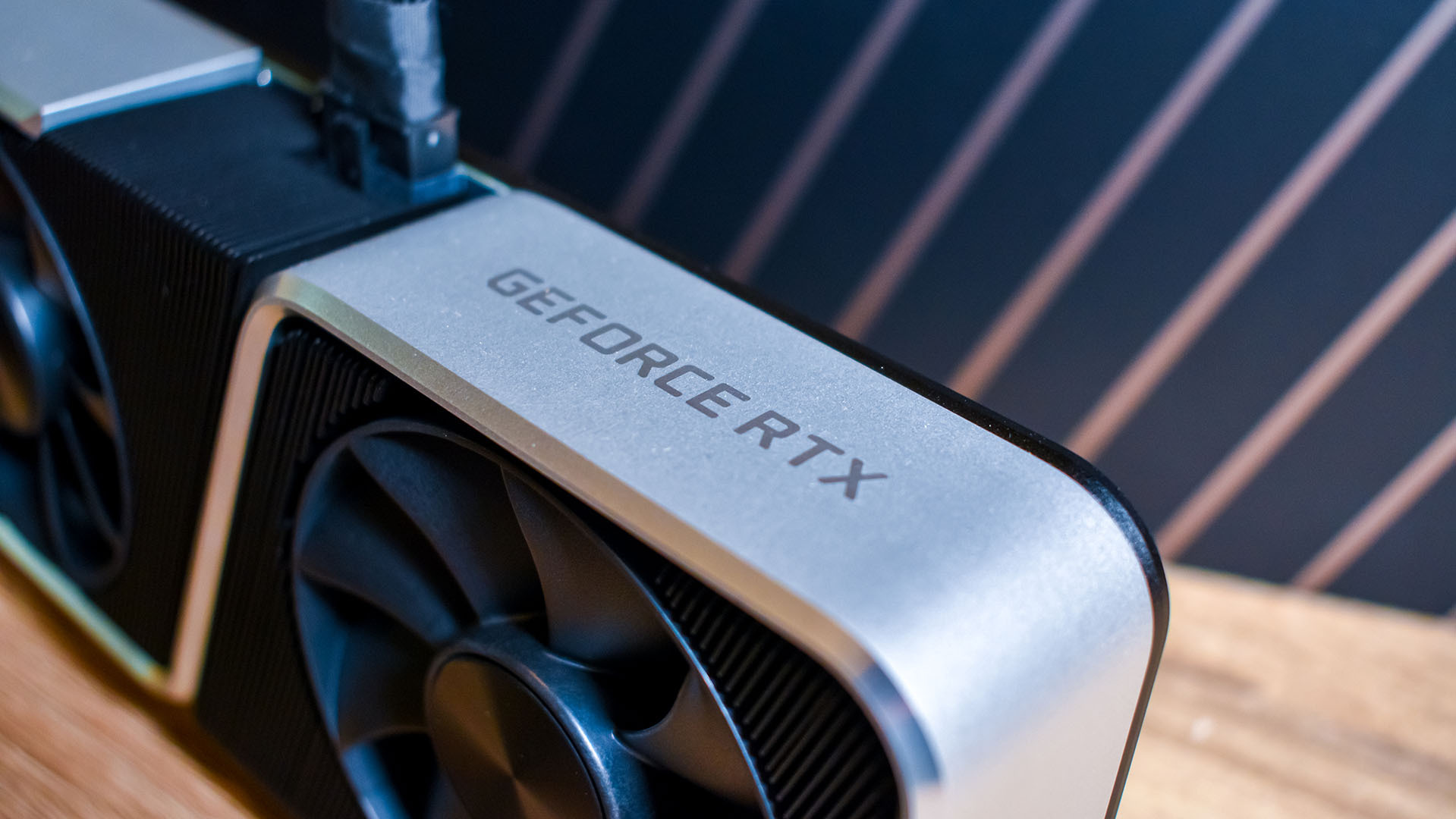
Price and availability
The Nvidia GeForce RTX 3060 Ti is available starting December 2, 2020, and you can pick it up starting at $399 (about £299, AU$540). This largely falls in line with what we’d expect a graphics card in this segment to cost, especially considering the Nvidia GeForce RTX 2060 Super started at the same $399 (about £315, AU$580) and the RTX 2060 was $349 (about £260, AU$475).
The RTX 3060 Ti falls right around the same price as the RTX 2060 Super, while being as powerful as the RTX 2080 Super, a card that retailed for $699 (about £560, AU$990). That card was a 1440p Ultra machine, and so it follows that the 3060 Ti will be as well, and now it’s way cheaper.
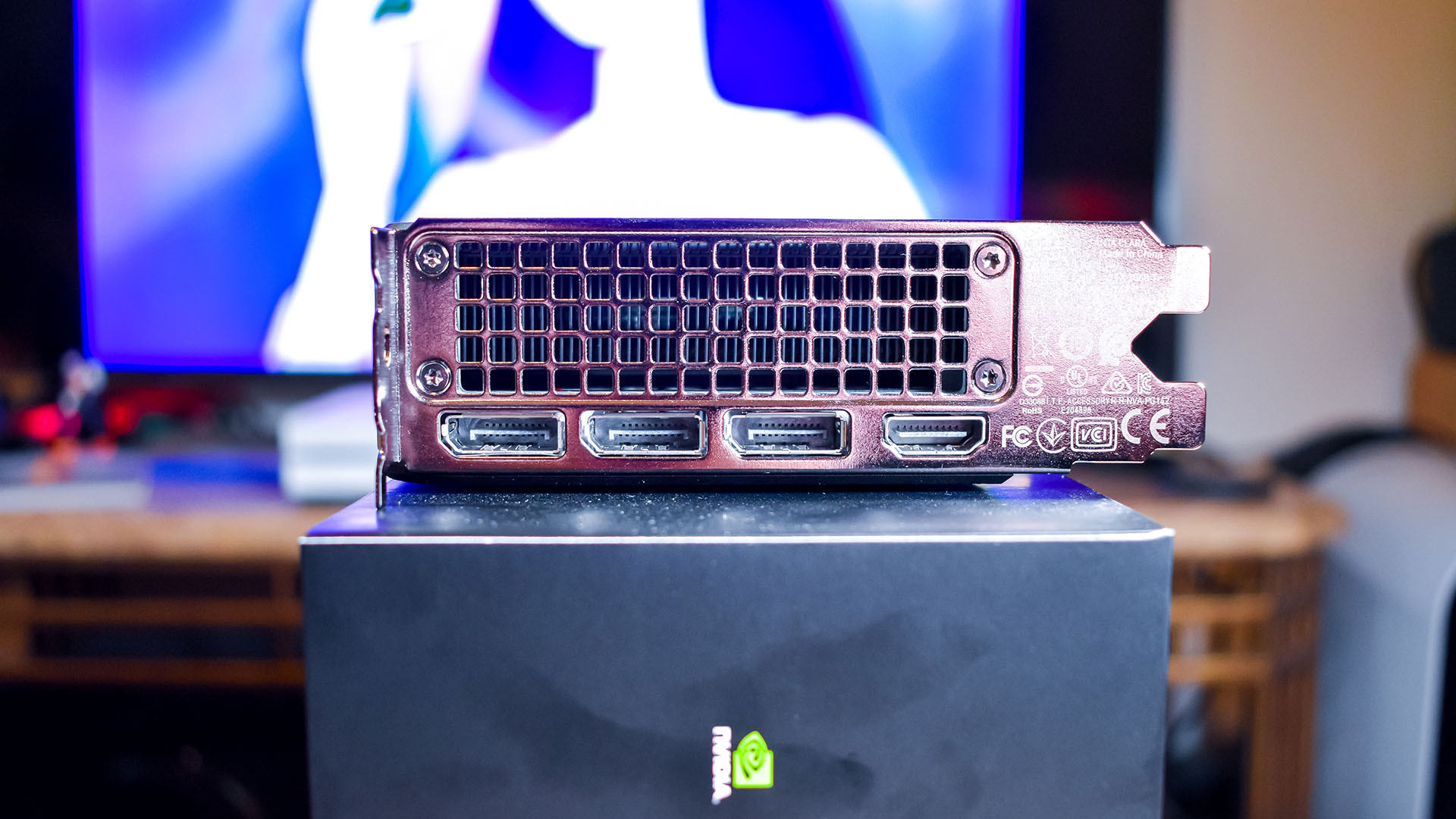
Features and chipset
The Nvidia GeForce RTX 3060 Ti is based on the same Ampere architecture as the RTX 3080, and gives us a look at what the Ampere lineup will look like in the mid-range and budget segment of the GPU market. This isn’t exactly going to be the graphics card that’ll push Watch Dogs Legion with ray tracing at 4K, but it is definitely up to doing it at 1080p.
With this graphics card, you’re getting 8GB of the same GDDR6 memory found in the RTX 3070, paired with 38 Ampere Streaming Multiprocessors (SM). However, because of changes Nvidia has made to its SM since Turing, each of these now has 128 CUDA cores, double that of the 64 in each Turing SM. That means there are now 4,864 CUDA cores in the RTX 3060 Ti, up from the 2,176 found in the RTX 2060 Super.
Power consumption sees an increase over the RTX 2060 Super, but it’s not as pronounced as other cards in the Nvidia Ampere lineup. The total graphics power (TGP) is 200W for the RTX 3060 Ti, up from the 175W of the RTX 2060 Super. It’s more, but it shouldn’t be so much more that you’ll need to worry about upgrading your power supply to accommodate – assuming you have a competent one in the first place, that is.
Back in Turing, each SM had two datapaths – one dedicated to Floating Point (FP32) workloads, and the other dedicated to Integer. With Ampere, and thus the RTX 3060 Ti, Nvidia was able to engineer the SM to have one of the datapaths essentially able to pull double duty, which is why the amount of CUDA cores has effectively doubled per SM with Ampere.
Outside of CUDA cores, each SM also has Tensor Cores for AI workloads like Deep Learning Super Sampling (DLSS), and dedicated ray tracing cores. Each SM has one RT core and four Tensor Cores. The dedicated among you might have noticed that’s half the amount of Tensor Cores in each SM than Turing had, but there’s a good reason for that – they’re more than twice as fast this time around.
The RT core is what’s responsible for the ray tracing that everyone is talking about. The whole point is to offload the massive computational load that any kind of ray tracing entails, in order to be able to produce playable framerates.
Basically, when a light ray is cast in a game engine, the SM will send that information over to the RT core, where it will calculate where that ray bounces, and report that back to the SM so it can render the image. This doesn’t make ray tracing computationally free, though, as you’ll see from the massive hit in performance that having RT on in Metro Exodus entails.
However, without these dedicated RT cores, the performance hit would turn the game into a slideshow.
Luckily, the other dedicated type of core, the Tensor Core is the other part of the equation that makes it somewhat sensible to enable ray tracing when playing the best PC games. Through the Tensor Core, developers can integrate DLSS in games, which is essentially an AI-enabled upscaling tech. This helps boost performance by having the SM render a scene in a lower resolution, then having the Tensor Core use data from Nvidia’s Supercomputers to intelligently scale that scene up to full resolution.
With DLSS, you’re able to make up much of the performance difference that ray tracing brings to the table, so you can have the awesome image quality benefits of ray tracing, without sacrificing too much in the way of performance. In fact, without DLSS, ray tracing simply wouldn’t be worth it.
The Nvidia GeForce RTX 3060 Ti also brings a wealth of features to the table too. Esports players are going to love Nvidia Reflex, which aims to cut system latency, RTX IO works alongside Microsoft DirectStorage to load data straight from your system storage to your VRAM and Nvidia Broadcast allows for you to filter out background noise and images while streaming or video chatting, regardless of the software you’re using.
That last one alone has been a huge boon to us throughout lockdown, and the thousands of video calls we’ve had to take from our bedroom throughout 2020. And, while it’s definitely true that a lot of software, like Zoom, Google Meet and Microsoft Teams all allow for similar functionality, having all the settings in one place is a huge time-saver.
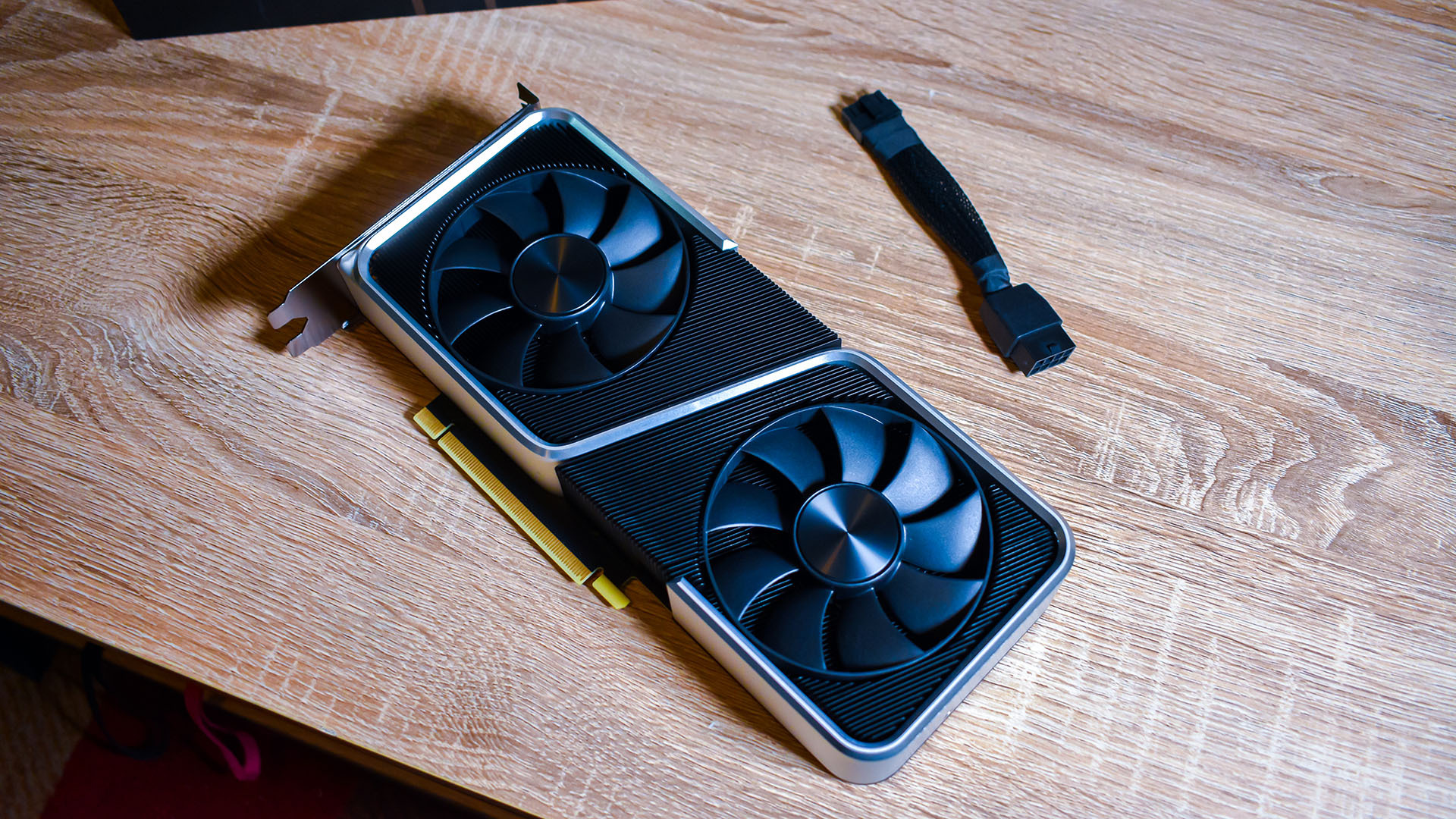
Design
The Nvidia GeForce RTX 3060 Ti Founders Edition is, well, almost exactly the same as the Nvidia GeForce RTX 3070 Founders Edition. The two cards are exactly the same size, with the same amount of fans, and the same exposed fins on the back of the card that helps shoot hot air out of the graphics card up and out of the system.
The only core difference here is that it’s a lighter gray color than the RTX 3070. And, just like the rest of the Founders Editions in the Ampere lineup, Nvidia has absolutely delivered some of the best-looking graphics cards we’ve ever seen.
And the best part? The stylish cooler is also effective. Throughout our entire testing suite, we saw temperatures peak at 72C, which is about the same temperature seen by the RTX 2060 Super, but while consuming 10% more power.
It’s not all sunshine and roses though. While the cooler itself is amazing, shrinking down the GPU board to accommodate it brings the same drawback here as the rest of the lineup. Namely, the RTX 3060 Ti is using the same 12-pin power connector. Nvidia does include an adapter in the box, which lets you connect one 8-pin PCIe cable to the 12-pin port, but it does make cable management a little more of a trouble. Luckily, PSU manufacturers have already started working on dedicated 12-pin PCIe cables, so hopefully that problem goes away as time goes on.
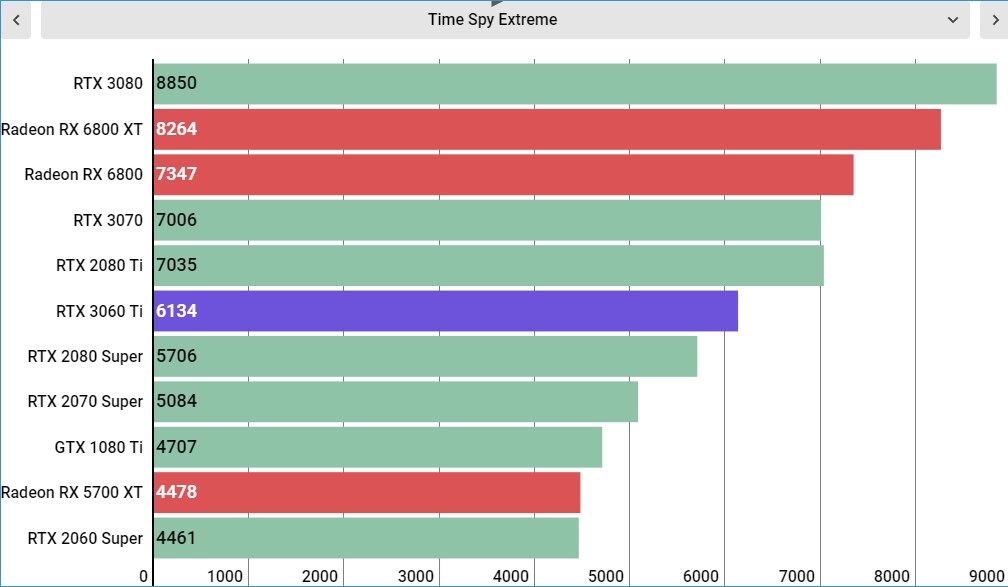
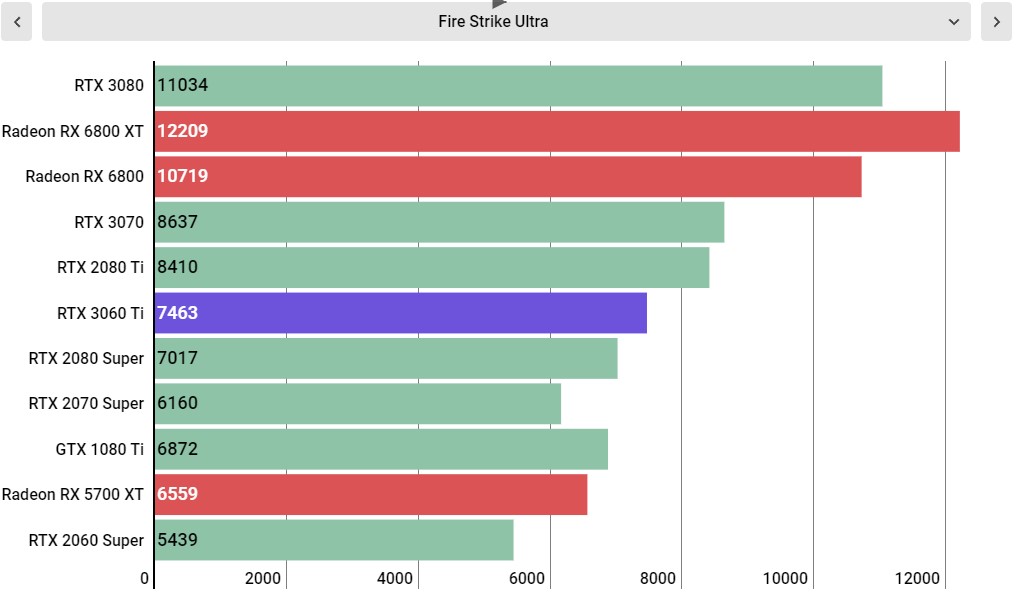
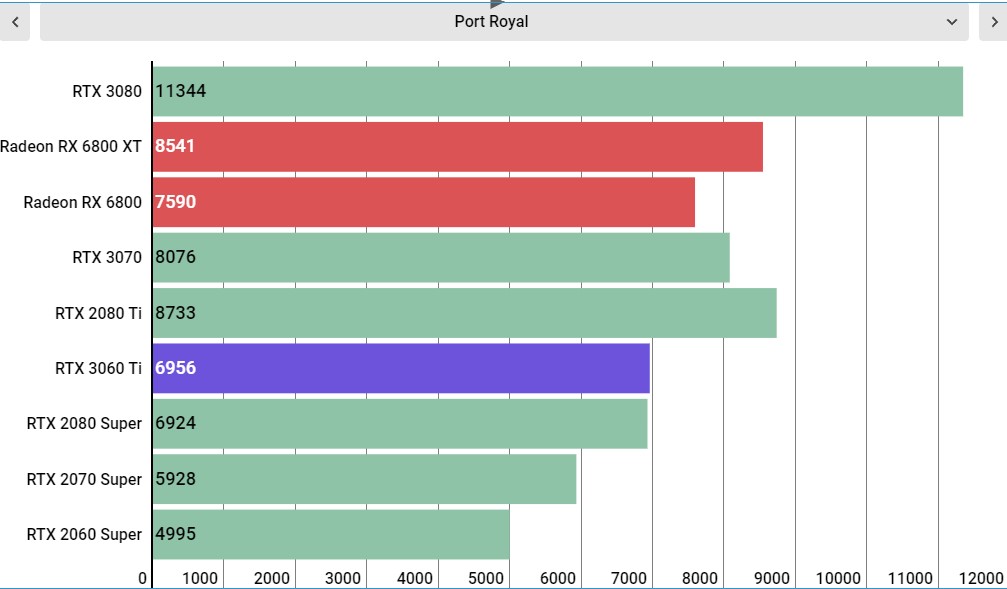
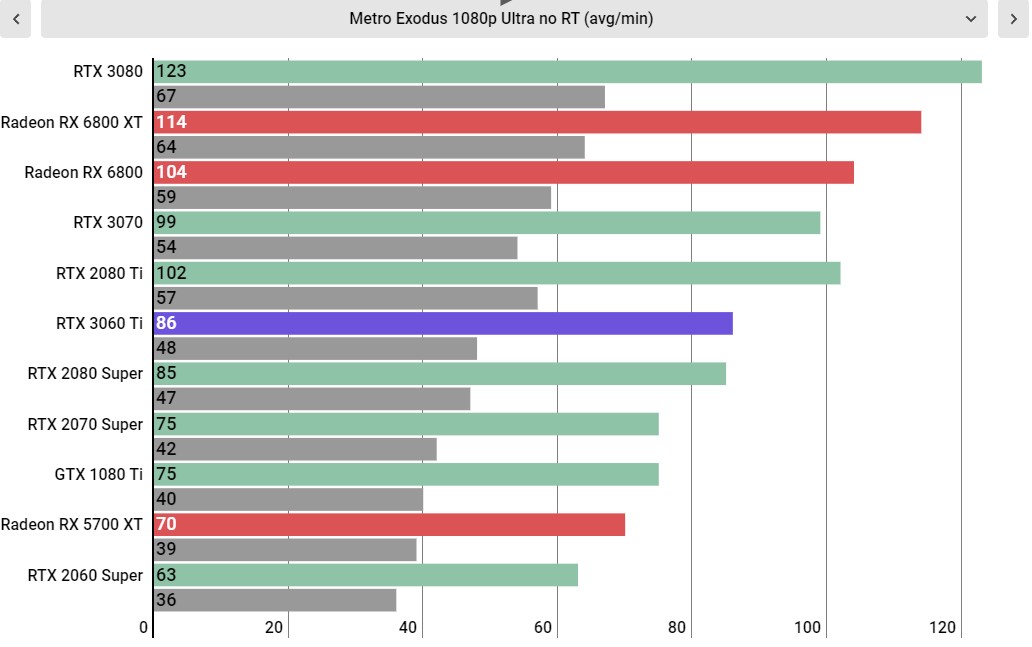
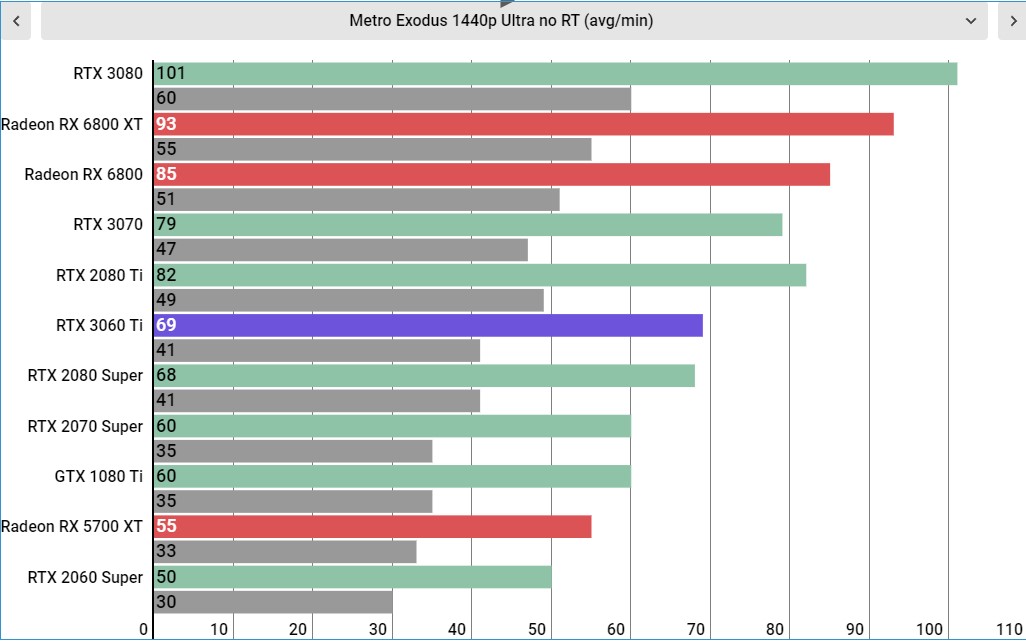
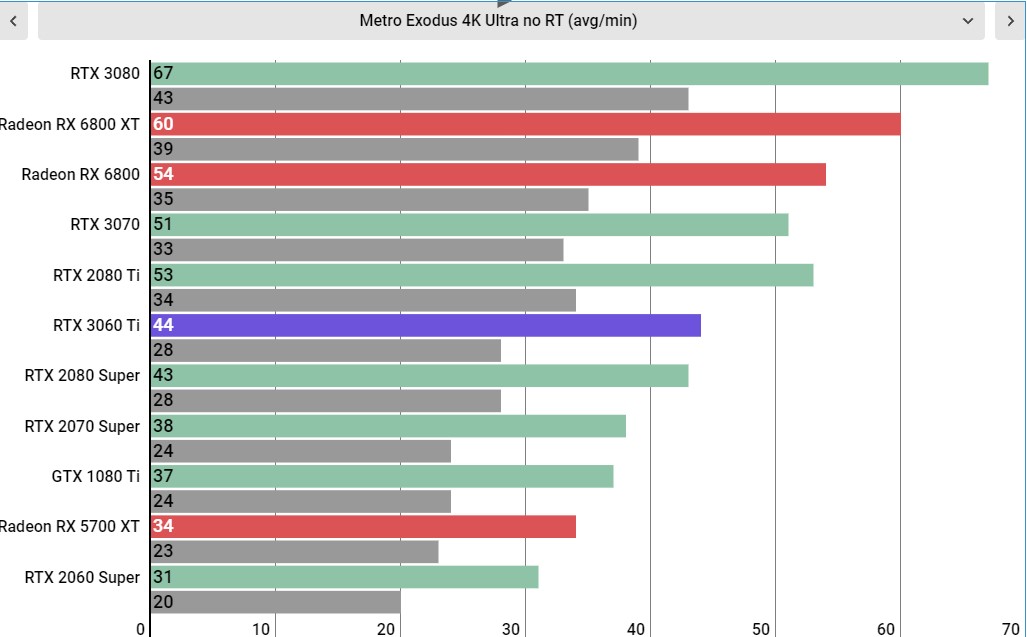
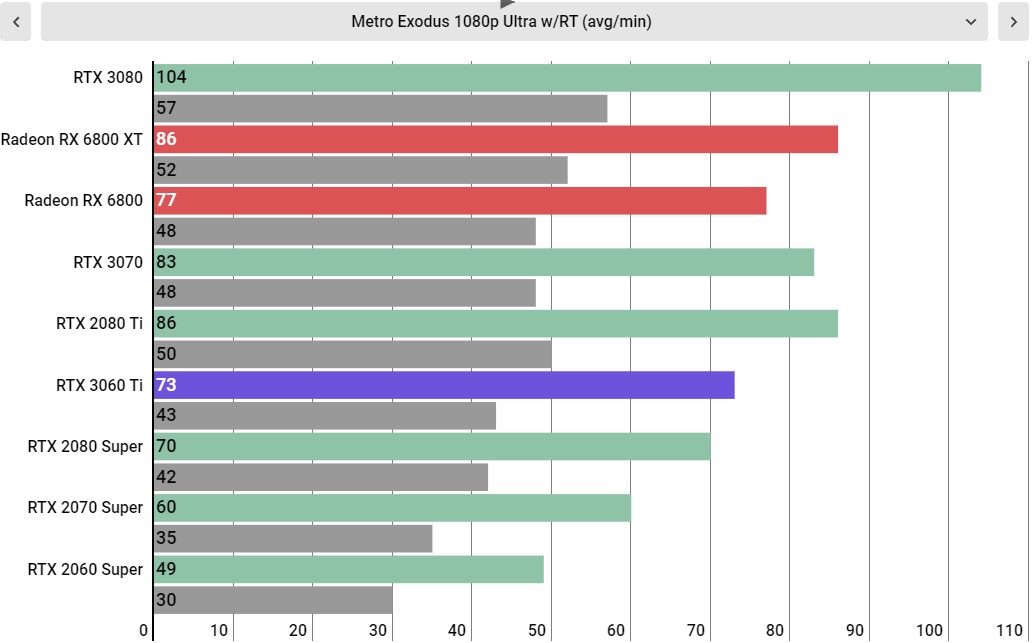


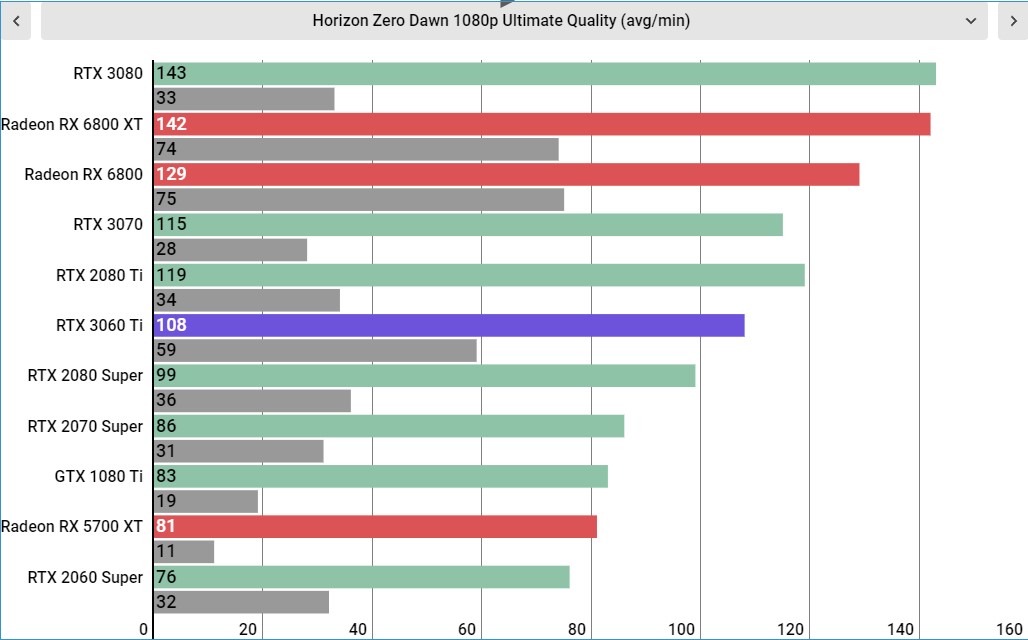
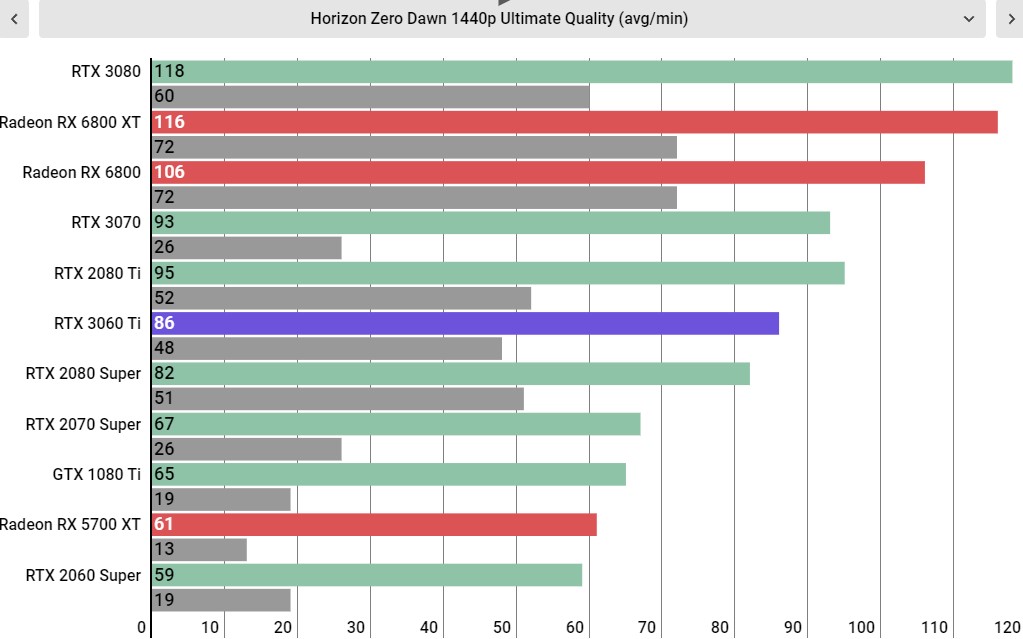
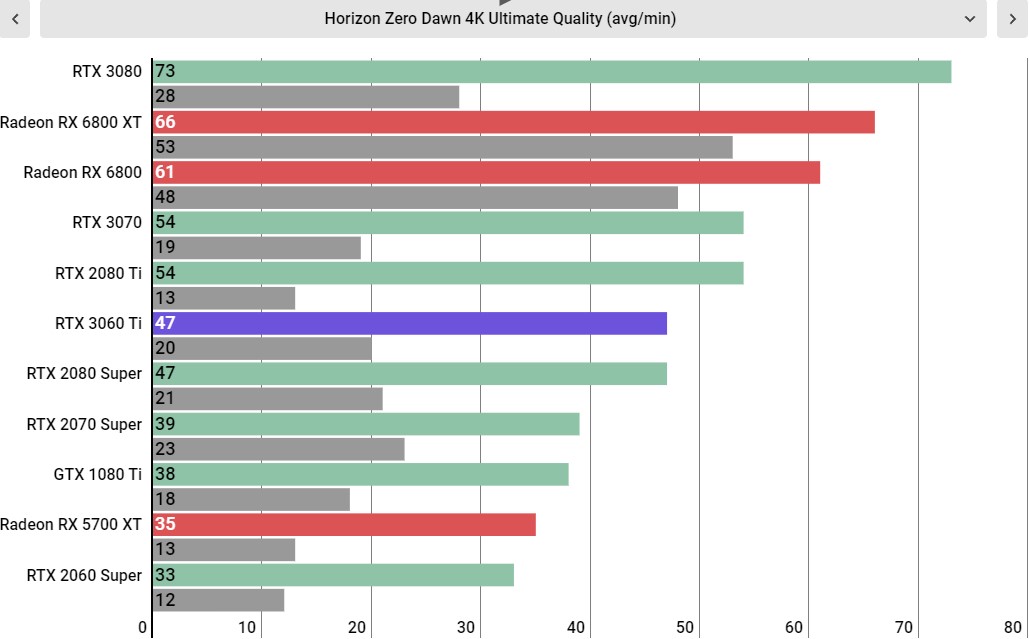
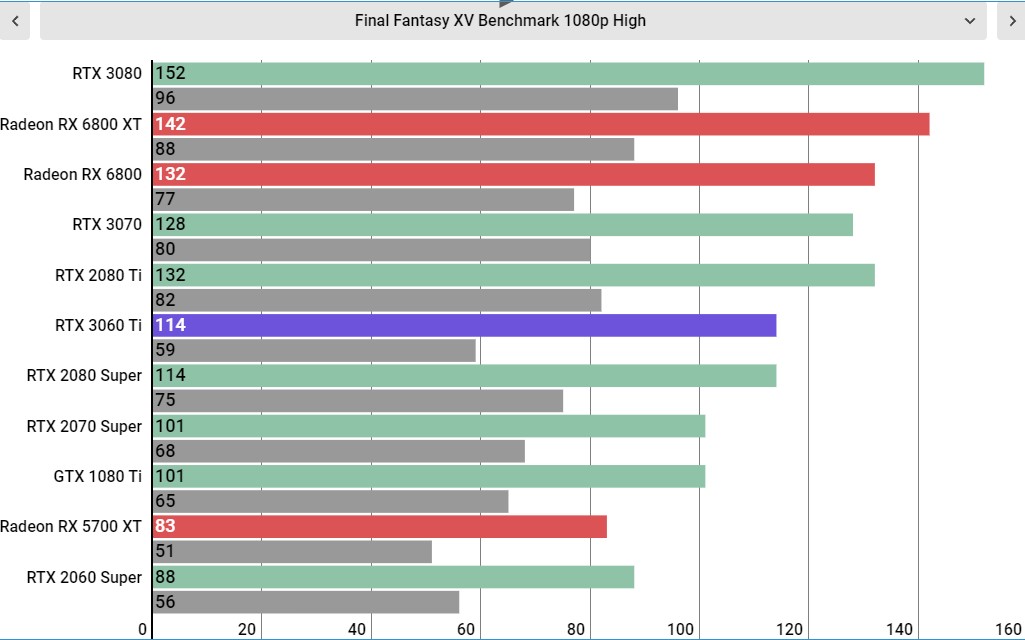
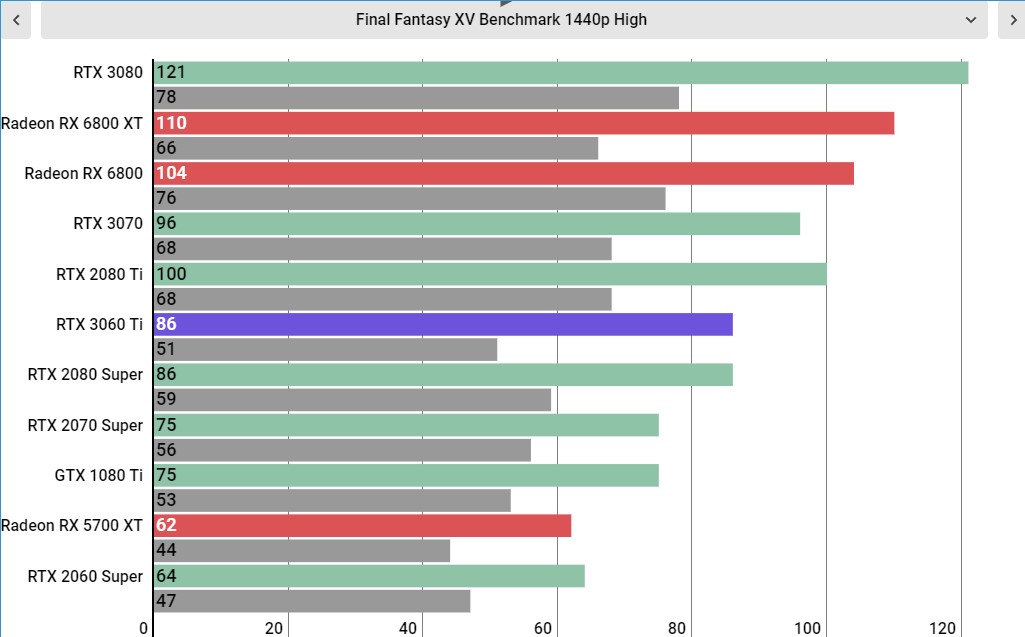
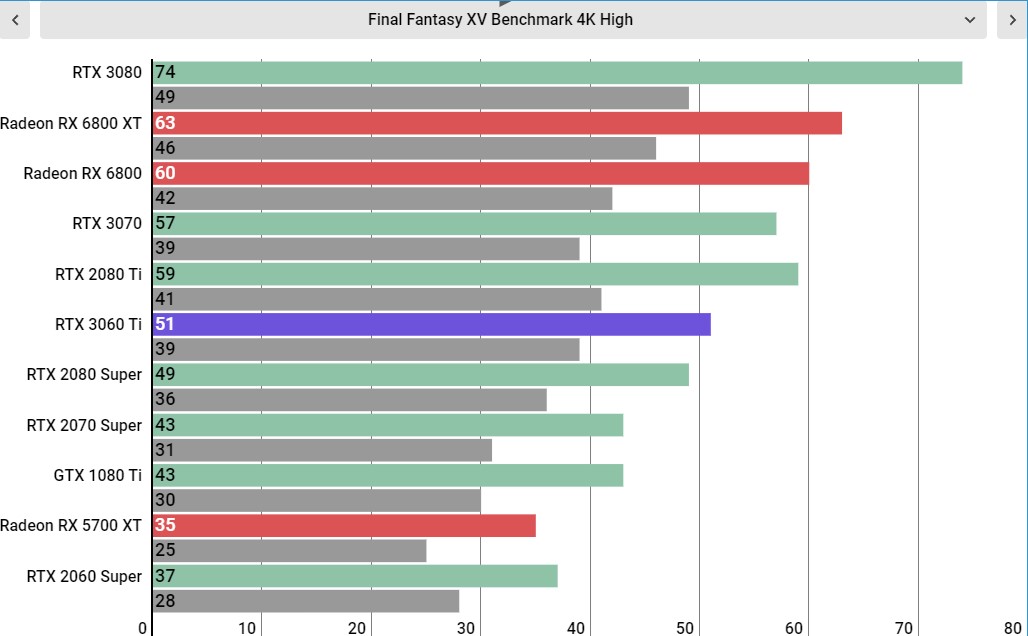
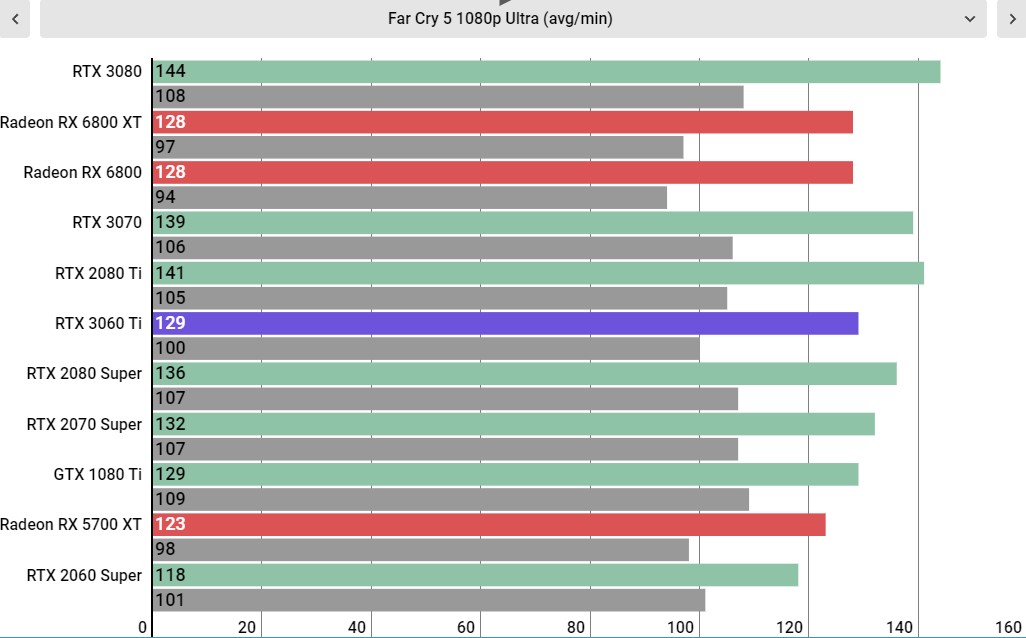

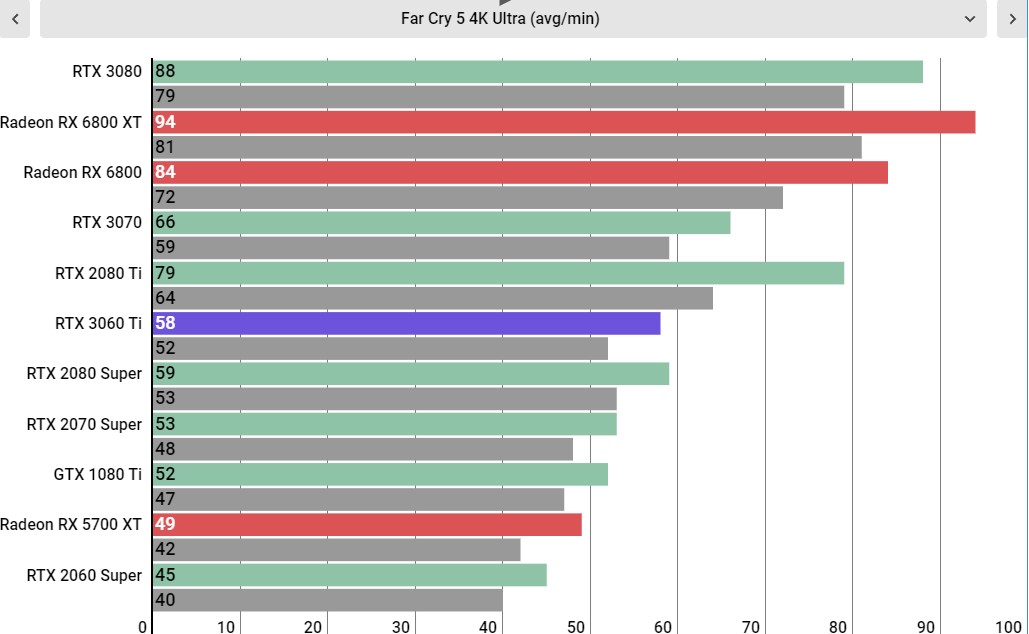
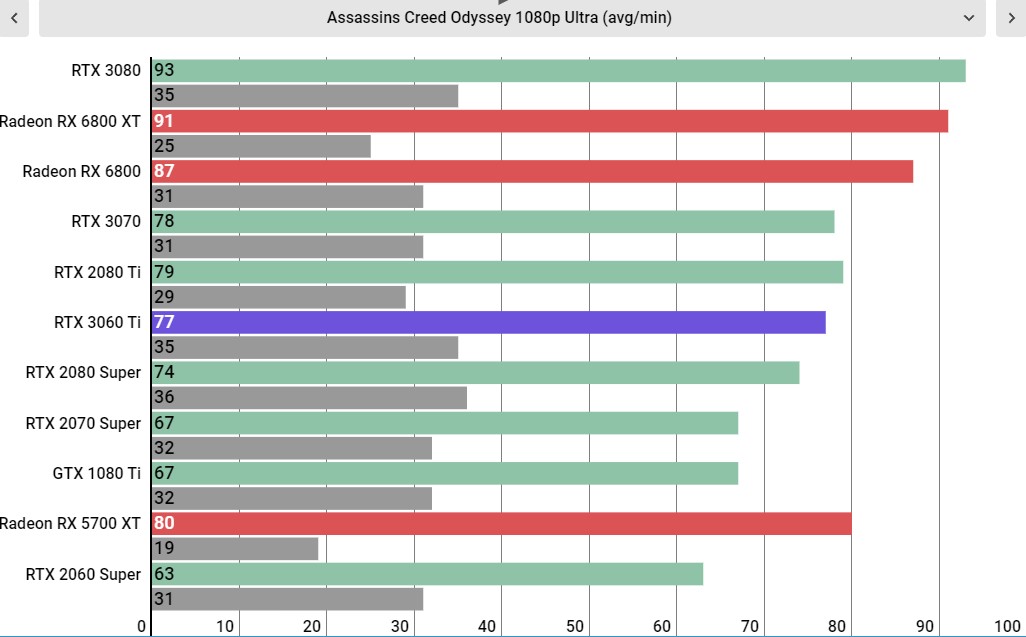
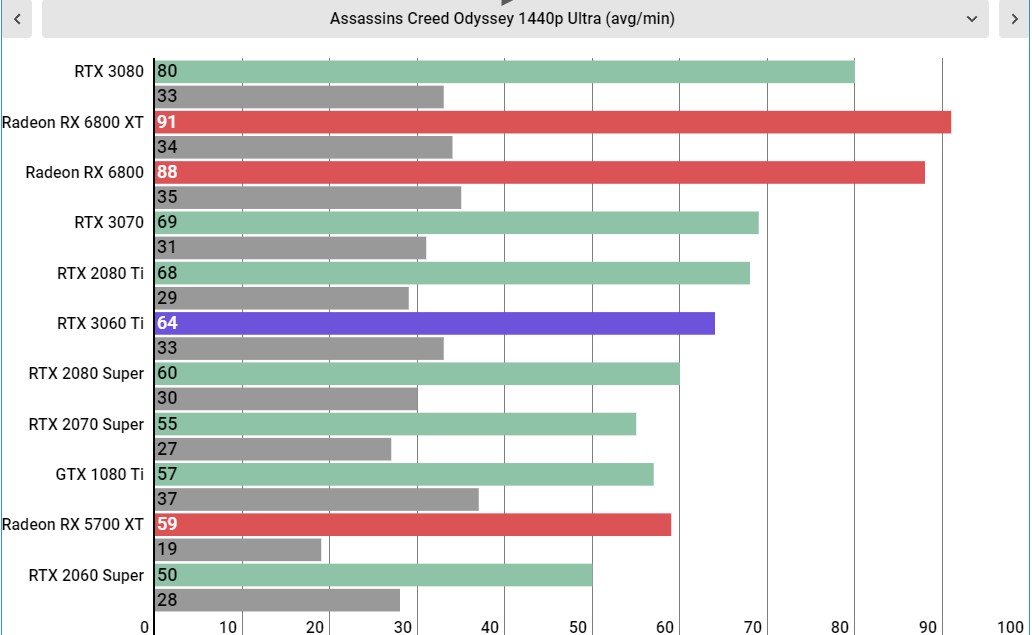
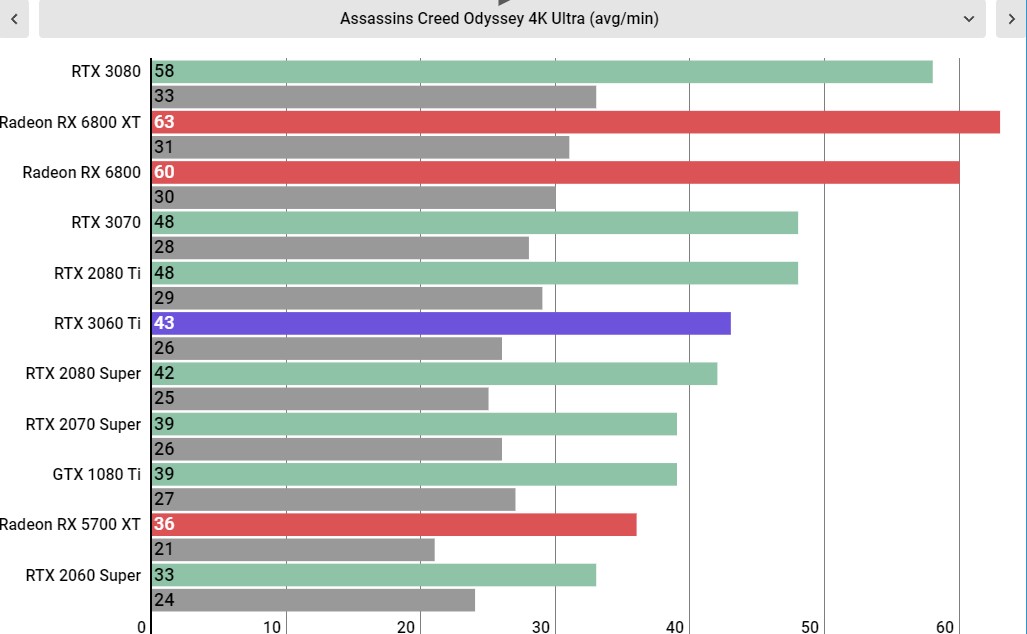
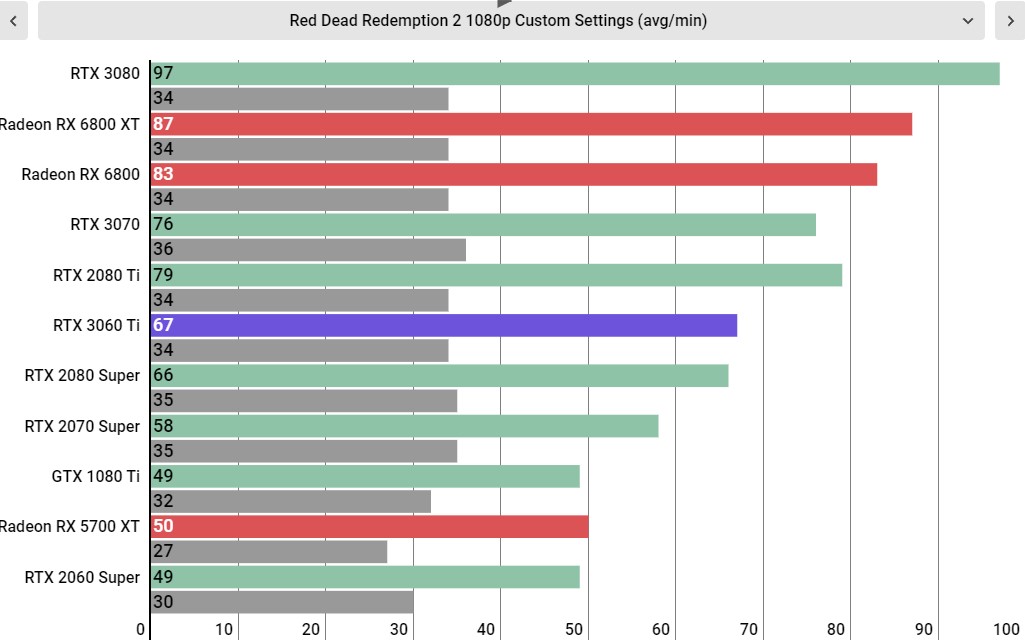
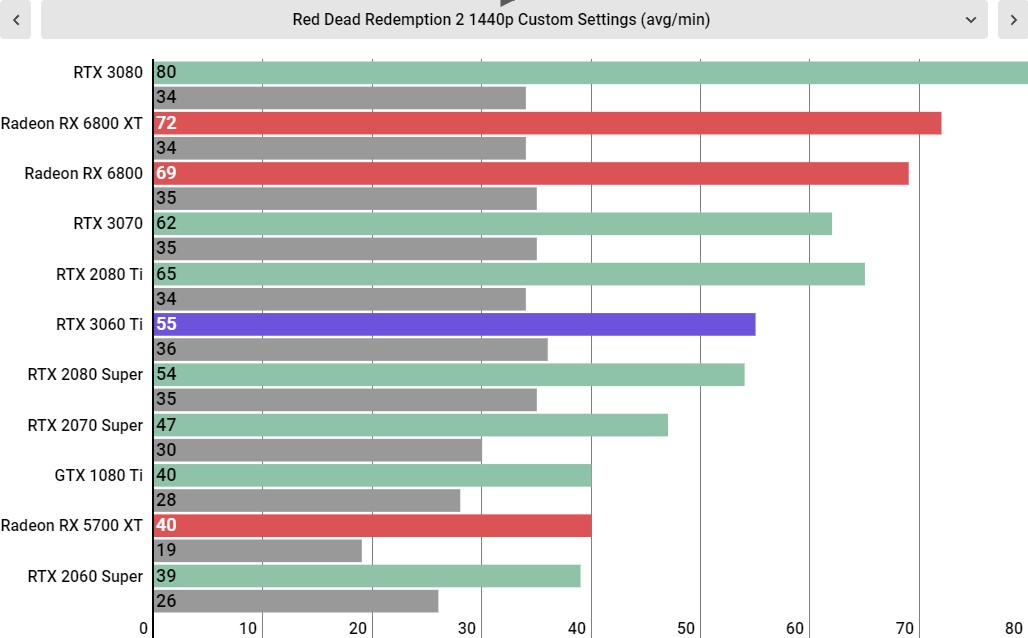
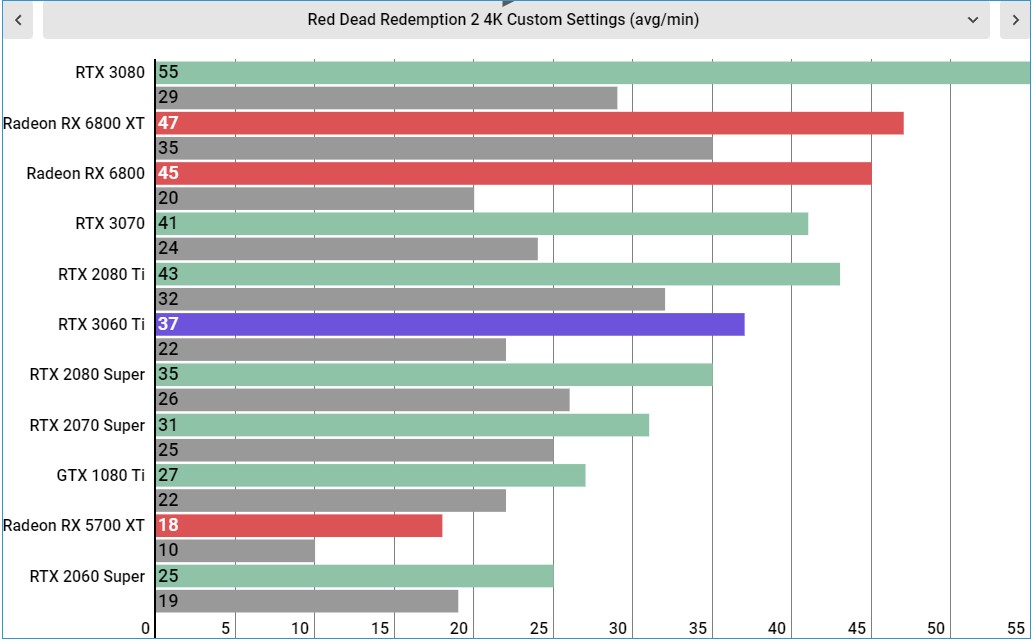
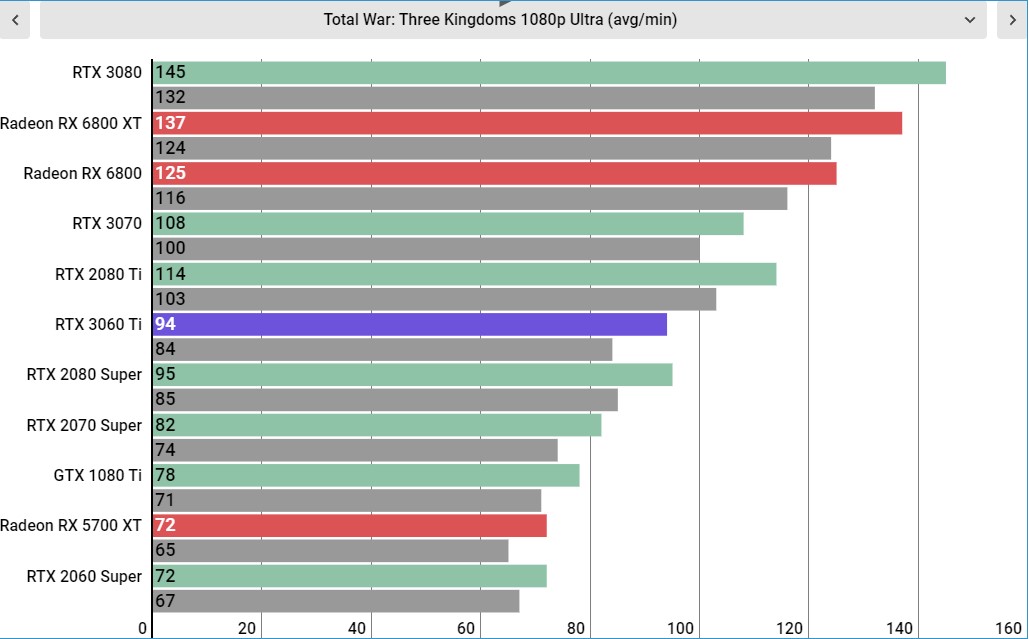
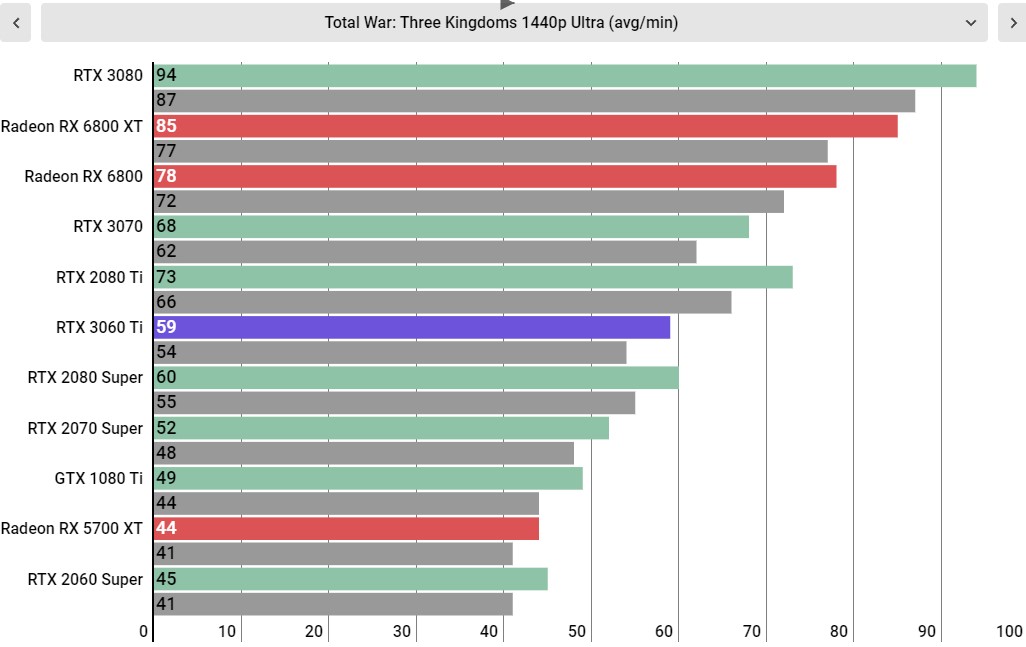
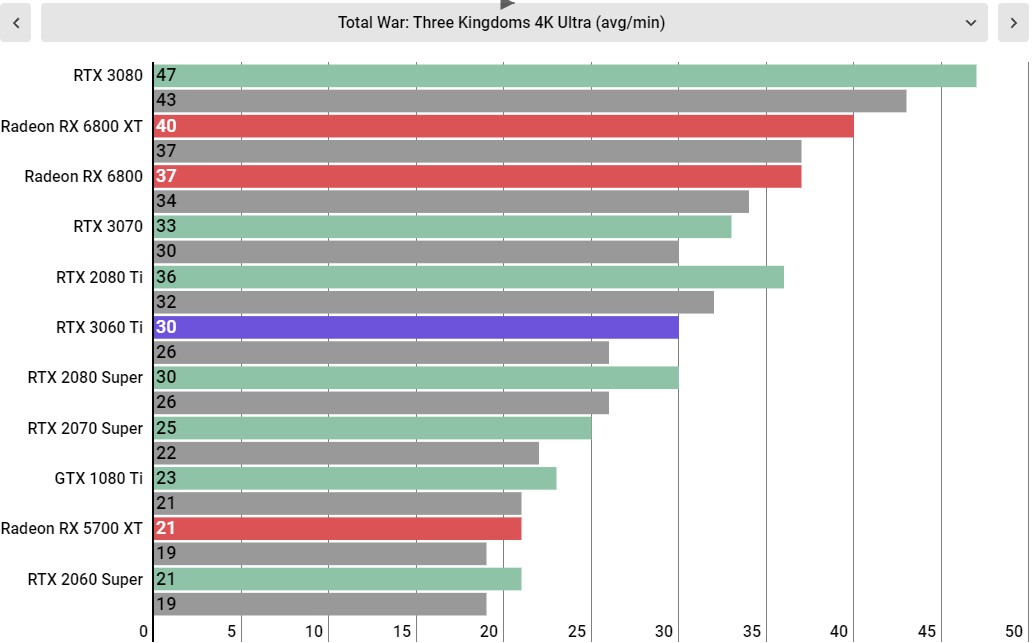
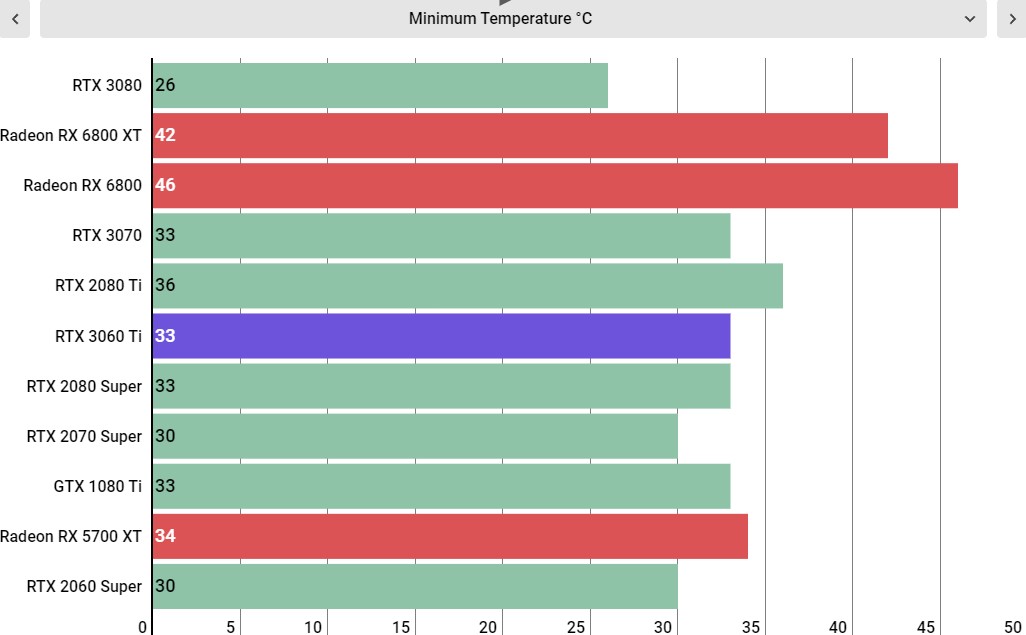
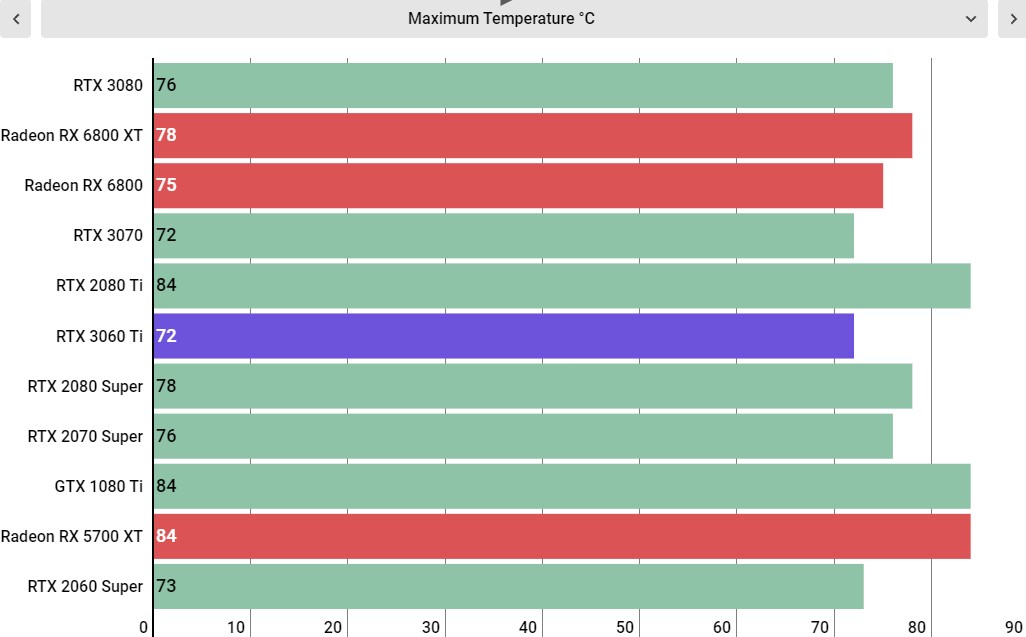
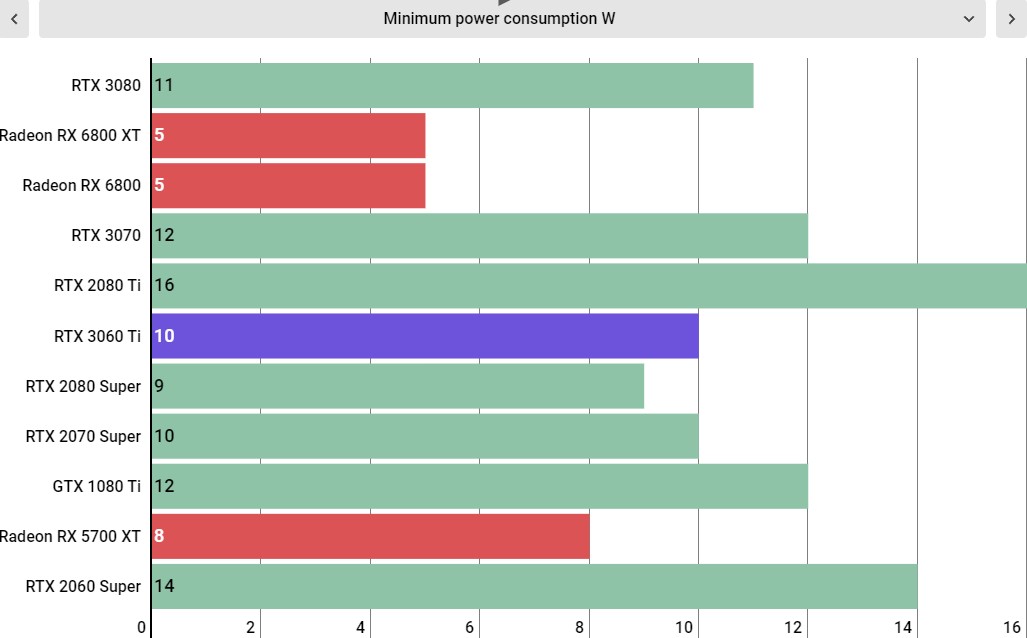
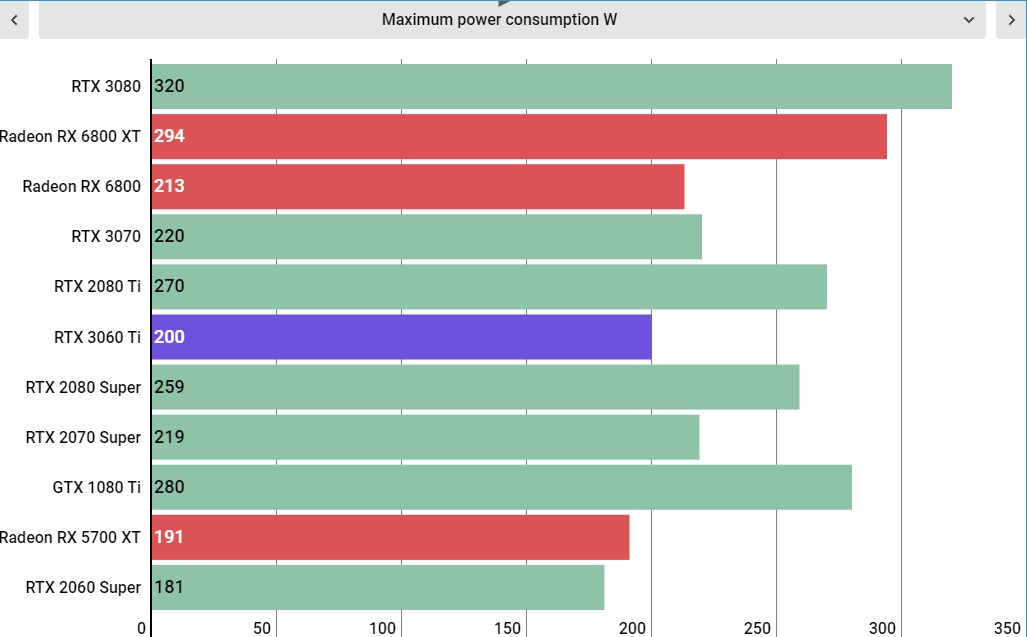
Performance and benchmarks
This is the system we used to test the Nvidia GeForce RTX 3060 Ti:
CPU: AMD Ryzen 9 5950X (16-core, up to 4.9GHz)
CPU Cooler: Cooler Master Masterliquid 360P Silver Edition
RAM: 64GB Corsair Dominator Platinum @ 3,200MHz
Motherboard: ASRock X570 Taichi
SSD: ADATA XPG SX8200 Pro @ 1TB
Power Supply: Corsair AX1000
Case: Praxis Wetbench
What we love about new mid-range graphics cards like the RTX 3060 Ti is that they bring the baseline of PC gaming performance up, due to how accessible they are to everyone. The Nvidia GeForce RTX 3060 Ti absolutely blows the RTX 2060 Super out of the water, just like the rest of the Ampere lineup has done to its predecessors.
In 3DMark Time Spy Extreme, for instance, which is a test geared towards 4K gaming performance in DirectX 12 – which current gen games will mostly be using – the RTX 3060 Ti is 38% faster than the 2060 Super. And, in the Port Royal test, which tests raw ray tracing performance, Nvidia’s new GPU is 39% faster than its Turing equivalent.
But what’s more impressive is how the RTX 3060 Ti compares to the RTX 2080 Super. Nvidia is claiming that the RTX 3060 Ti is faster than the RTX 2080 Super, but that’s a little bit of an overstatement. However, the RTX 3060 Ti is around the same level of performance as the RTX 2080 Super, which is still incredibly impressive, given the price of this new card.
In those two synthetic benchmarks we mentioned earlier, the RTX 3060 Ti is 7% and faster and 0.5% faster in Time Spy Extreme and Port Royal, respectively.
In actual games, the RTX 3060 Ti obviously kills it. In Metro Exodus without ray tracing and on the Ultra quality preset at 1440p, the RTX 3060 Ti manages 69 fps to the RTX 2080 Super’s 68 fps – which is within margin of error. When you turn on ray tracing however, the third-generation RT Cores get to stretch their wings, with a wider 8% performance lead.
Throughout most of the games we tested the Nvidia GeForce RTX 3060 Ti in, the graphics card showed its strength in 1440p gaming, with only Red Dead Redemption 2 and Total War: Three Kingdoms resulting in framerates less than 60 fps at max settings. And, considering just how heavy those two games are, the RTX 3060 Ti’s scores of 55 fps and 59 fps, respectively, is damn impressive.
The Nvidia Geforce RTX 3060 Ti brings game-changing 1440p performance to the mid-range market, and should remain a go-to 1440p card for quite a while, considering how both AMD and Nvidia have set their sites on 4K as the new Flagship battleground.
And, when it comes to straight 1440p performance, the RTX 3060 Ti absolutely stands completely on its own in the marketplace when you consider both the performance and the price. This graphics card is around the same price as the AMD Radeon RX 5700 XT, but is around 35% faster throughout our testing.
Assuming that there will be stock of this card when it releases – which is a big ask in 2020, we know, the RTX 3060 Ti will probably be the best graphics card for most people. We’re sure AMD has something in the cards to make this recommendation a little more complicated, but at the time of writing, Team Red has nothing that can touch the Nvidia GeForce RTX 3060 Ti from a sheer value perspective, which is definitely a weird place to find AMD in.
It’s definitely going to be interesting to see how this graphics card matures over the next generation of gaming, however. With the PS5 and Xbox Series X having just hit the streets, graphics requirements for games are about to become a lot more demanding. Right now the RTX 3060 Ti definitely feels like it’s ready for the big time, but only time will tell how this graphics card handles this next generation of games.
In the here and now, however, anyone looking for a mid-range graphics card to handle 1440p gaming is going to find a lot to love. At that resolution, you’re easily going to be able to just crank settings up to max and forget about them. That’s not something you’ve really been able to do before now in this price segment. The best part? There’s enough performance headroom here to take a peek at what 4K gaming has to offer – just don’t expect that buttery-smooth 60fps experience that the RTX 3080 can offer.
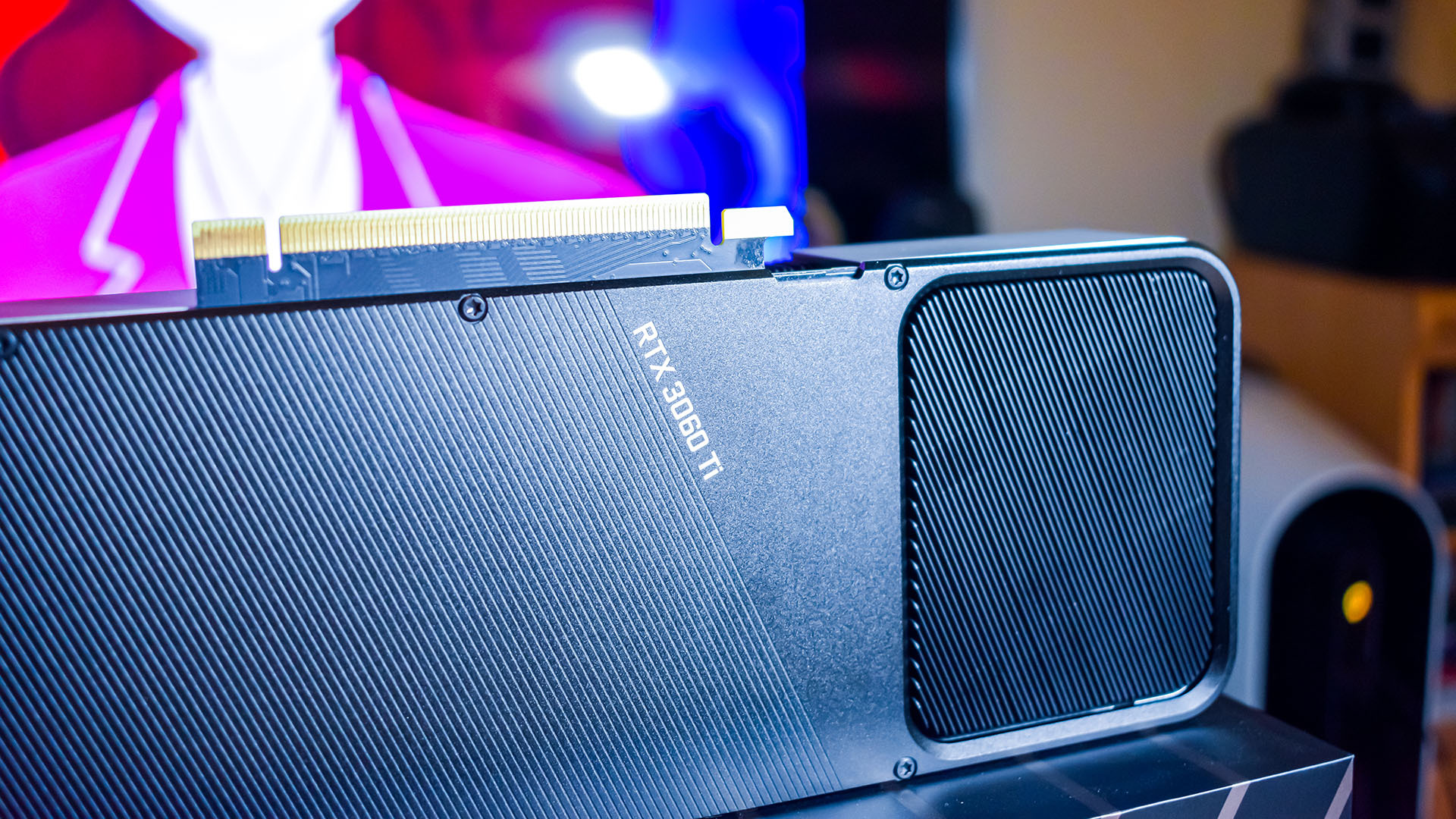
Buy it if…
You’re comfortable staying at 1080p
The Nvidia GeForce RTX 3060 Ti is definitely capable of some entry-level 4K gaming, where this graphics card really shines is at the lower 1080p and 1440p resolutions. The RTX 3060 Ti will be able to deliver high-framerate gaming at 1080p for years.
You don’t want to spend a whole lot of money
Because the Nvidia GeForce RTX 3060 Ti is just $399 (about £299, AU$540), you don’t have to worry about emptying your piggy bank just to get the latest graphics card.
You want ray tracing at a reasonable price
At 1080p, the RTX 3060 Ti is an absolute champion at ray tracing, and you don’t have to worry about unplayable frame rates at 1080p, or really even 1440p with DLSS enabled.
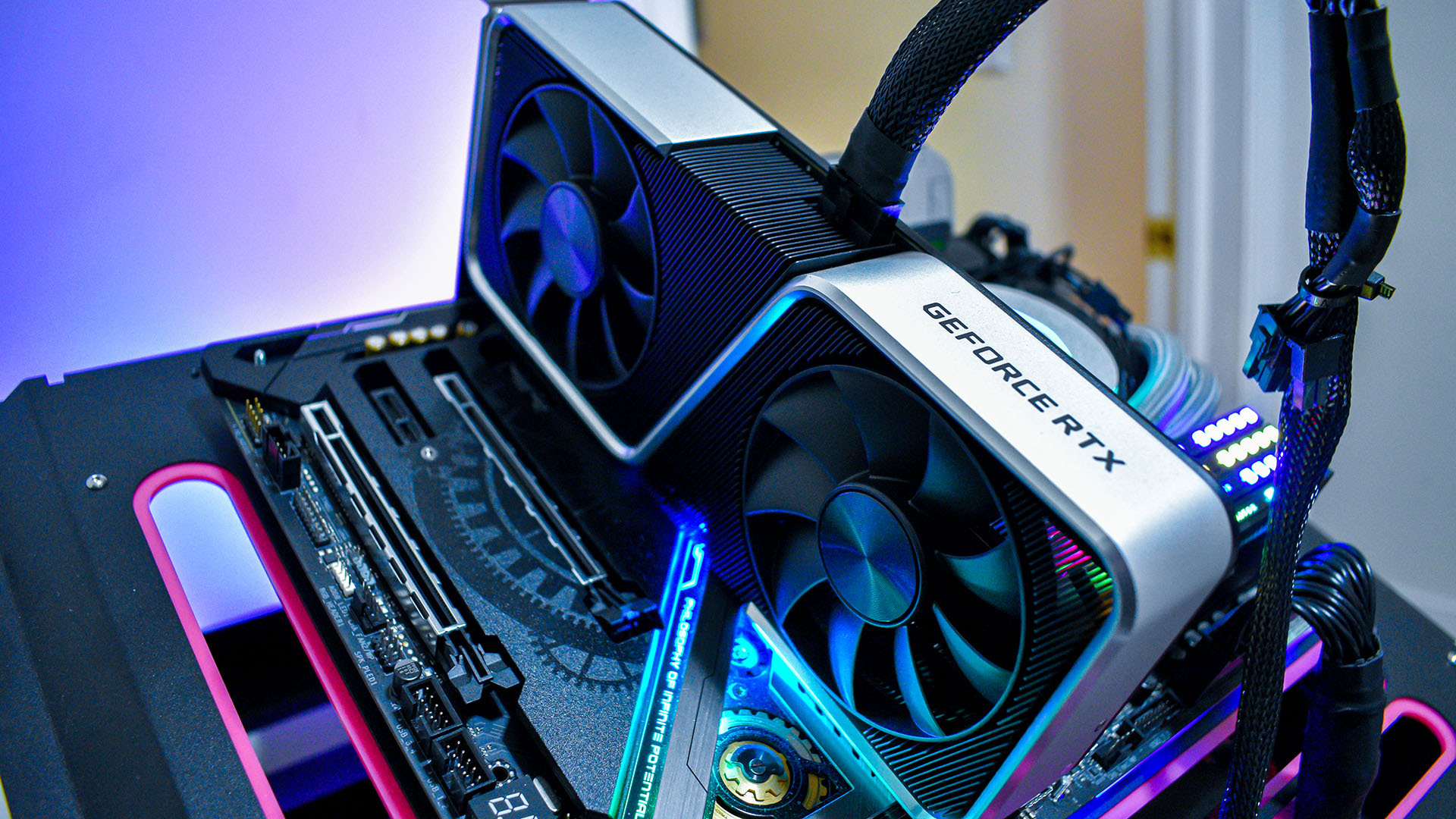
Don’t buy it if…
You’re looking for 4K gaming
The Nvidia GeForce RTX 3060 Ti can do a bit of 4K gaming, but if that’s the main resolution you’re going for, you’re better off going for a more capable graphics card, like the RTX 3070 or RTX 3080.
Originally published December 2020
via Tech Trade
Comments
Post a Comment